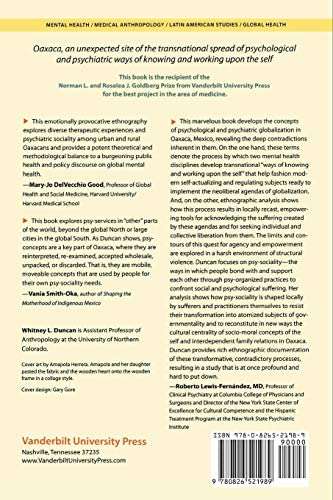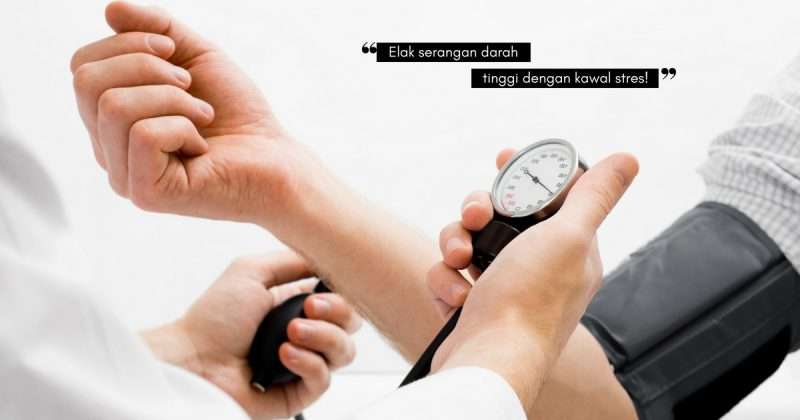The First Set of Pictures
First, your technician will start an IV line in your arm. You will then be injected with Myoview (or another medication). After the medication circulates, an initial set of pictures will be taken of your heart while you are lying under a nuclear imaging scanner. This medication highlights areas of the heart that are using up oxygen.
In a healthy heart, the highlighted section resembles the shape of a donut or horseshoe. “You want the rest images and stress images [which are taken during the second part of the test] to look similar, even if the images show there’s a defect,” Dr. Willke points out.
Your doctor is also looking for significant problems that may be showing up before you undergo the stress portion of the test. “You compare the patient’s story with the cardiogram, the images taken, and any old films you may have, to decide whether to go through with the stressed heart portion,” he explains. If the images indicate major issues, you may be referred to a cardiologist right away.
The Stress Test
From there, you undergo the stress portion of the test. During this half, you will walk on a treadmill, which will slowly increase in speed or resistance, until you reach your target heart rate or exhibit symptoms indicating that you need to stop (chest pain or a change in blood pressure that is concerning, for example).
Once you reach your target heart rate, you are injected with Myoview again. You will stay on the treadmill for another minute to allow the Myoview to circulate. A second type of stress test has your heart stressed by an injected chemical (there are a number of different types of chemical injections that may be used), allowing you to bypass the treadmill if your condition warrants it.
You will then be monitored until your heart rate returns to baseline.
The Second Set of Pictures
Once the exercise portion is complete, you will be instructed to eat a meal and then come back two hours later. Then, you will have a second set of photos taken of your heart.
“You can eat anything you want,” Dr. Willke says. “The second set of pictures looks better with food in the belly!”
If your doctor wants you to undergo a stress test, you may be wondering what to expect. Also called an exercise test or treadmill test, it gauges how your heart responds when working its hardest. It’s an important test for cardiologists to get a measure of your heart health. The stress test can help your doctor determine if you have an irregular heartbeat (arrhythmia) or if certain symptoms — such as difficulty breathing — are related to a heart condition.
How to Prepare for the Test
Before you start the test, be sure to tell your doctor what, if any, medications you are currently taking. This includes over-the-counter medications or supplements, such as a multivitamin. Continue taking the medication unless your doctor tells you to stop prior to the test, as is the case with certain heart medications.
Your doctor will ask you to refrain from eating or drinking for two to four hours prior to the test. This is to reduce the likelihood that you’ll experience nausea during the test. You’ll want to dress comfortably in exercise clothing and sneakers for walking or running.
The Stress Test Process
Once in the exercise laboratory, your doctor will attach electrodes to your arms and chest. The electrodes connect to an electrocardiogram (EKG) machine, which will record your heart’s electrical activity. The EKG also monitors your heart rhythm and how fast it’s beating. The doctor will also attach a blood pressure cuff to your arm, which will tighten as it expands during the test.
Once you’re prepared, you’ll exercise on a treadmill or stationary bike. A doctor or nurse will be nearby in case you feel ill during the test. If you’re using a treadmill, you’ll start by walking in place slowly. The difficulty level will increase gradually, with the treadmill tilting up into an incline and the speed increasing to make you walk faster. Your doctor may ask you to breathe into a tube to measure the amount of oxygen you have used. On a stationary bike, you’ll start by pedaling slowly and work up to pedaling faster. The resistance may be adjusted so that pedaling is more difficult, making you and your heart work harder. You may stop the test and rest at any time if the exercise is too difficult or you feel unwell. Otherwise, it will continue until you reach a target heart rate.
If you are unable to exercise, you’ll be given medication to simulate exercise by making your heart beat faster and increasing blood flow.
The Follow-Up
Once the test is over, you’ll be allowed to rest and drink some water. Your heart activity and blood pressure will continue to be monitored until they return to their normal levels.
Your doctor will give you preliminary results before you leave, but the official result will take a couple of days. According to a report in the American Family Physician, results will typically include any symptoms recorded during the test, why the exercise ended (such as illness or target heart rate reached), blood pressure response, and any observed changes to the EKG. The results may confirm or rule out the existence of a heart murmur, exercise-induced hypotension (decrease in blood pressure), or myocardial ischemia (reduced blood flow). According to a study in Postgraduate Medical Journal, heart failure can manifest as exercise intolerance, and exercise capacity is reduced with even mild heart failure.
Possible Risks of Stress Tests
A heart stress test is fairly safe. It simulates strenuous exercise, such as jogging or running up a flight stairs, so there are only minimal risks associated with a stress test, such as a change in blood pressure or abnormal heart rhythm. Chest pain may also occur, but these complications typically go away shortly after exercising. If you were given medication due to an inability to exercise, you may get a headache or feel jittery or anxious.
Stress tests are just one way for doctors to gauge your heart health, and if you’re at risk for severe heart conditions, this will help your health care team determine your treatment plan.
A stress test, also known as an exercise test or treadmill test, can give an idea of how well a person’s heart works during physical activity. It can also help diagnose various heart conditions.
A stress test typically involves walking on a treadmill or using a stationary cycle while medical devices monitor breathing, blood pressure, heart rate, and heart rhythm.
Some people, such as those with arthritis, may not be able to do the activities involved in an exercise stress test. Instead, a doctor will give these people a drug to make their heart work harder, as it might during exercise.
In this article, learn why a doctor may recommend a stress test and what to expect during one.
Types
There are a few different ways of completing a stress test, depending on the person’s needs.
Exercise stress test
During a stress test, the doctor will aim to determine the person’s heart rate, blood pressure, breathing, and how tired they feel during different levels of physical activity.
Here is a step-by-step description of what happens during a stress test using a treadmill:
- Having attached sticky electrodes to the person’s chest to monitor the heart, the doctor will take some readings.
- Next, the person will stand on the treadmill.
- As the treadmill starts to move, the person will walk slowly.
- The treadmill speed will gradually increase.
- The treadmill may go into an uphill, or incline, position.
- Toward the end, the person may breathe into a mouthpiece to measure the air they breathe out.
- The treadmill will stop, and the person will lie down while the doctor takes their blood pressure and other readings.
The person will exercise for 10–15 minutes but can ask to stop at any time if they feel unwell.

Share on Pinterest
During an exercise stress test, a doctor will monitor heart rate and blood pressure with sticky electrode patches. Credit: simonkr/Getty Images
If the person experiences any of the following, the doctor might stop the test:
- dizziness
- high blood pressure
- low blood pressure
- arrhythmia, or irregular heartbeat
- chest pain
- shortness of breath
- fatigue
They may also stop the test if the electrocardiogram (EKG) device detects any unusual changes.
Qualified medical professionals are always on hand in case of any adverse effects.
Stress test without exercise
If a person cannot exercise, the doctor may use a certain medication to trigger the same process.
In this case, they will attach electrodes to the person’s chest and deliver the medication into their arm through an IV line. The medication will take 15–20 minutes to deliver.
The medication will stimulate the heart. It may cause effects similar to those that occur during exercise, such as flushing or shortness of breath.
Nuclear stress test
Depending on the results, the doctor may recommend a nuclear stress test as a next step.
Also known as a nuclear heart test or radionuclide scan, this can give a more detailed and accurate assessment of the heart.
The process is similar to that of the exercise stress test, but the doctor will inject a tracer dye into the arm to highlight the heart and blood flow on an image. The dye will also show any areas of the heart where blood is not flowing. This can suggest a blockage.
As with the exercise test, if a person cannot exercise, the doctor may use medication instead.
The person will then undergo an imaging test that involves a small amount of radiation, such as a single-photon emission computer tomography or cardiac PET test.
The doctor will take two sets of images, each covering 15–30 minutes. They will take the first just after the person has exercised and the second when their body is at rest, either later that day or the next day. They may also take “at rest” images before the person exercises.
In this way, the doctor can compare how the heart looks and functions normally and while under stress.
This test is not suitable for anyone who is or may be pregnant, as radiation may harm the fetus. Anyone who is breastfeeding should let the doctor know beforehand.
What to expect
A doctor may advise the person not to consume caffeinated drinks or take certain medications on the day of the test. These substances could affect the results.
Anyone who usually has an inhaler should bring it to the test and ensure that the doctor knows about it.
Exercise stress test
A person should wear comfortable clothes and walking shoes.
The test involves the doctor hooking the person up to various medical devices that monitor the heart. To achieve this, the doctor will place:
- sticky patches, or electrodes, on the chest
- a blood pressure cuff around the arm
- a pulse monitor on the finger
A nurse may need to shave a person’s chest to allow the electrode patches to stick.
If the person is not exercising, they will receive an infusion of a certain medication into their arm through an IV line. This may cause shortness of breath or a headache.
Nuclear stress test
A person should avoid applying oil, lotion, or cream to their skin on the day of the nuclear stress test.
The doctor will give the person an injection of the tracer liquid. This may feel cold. The technician will take some images of the heart before exercising and after. A person lies flat on a table for these images.
The length of time spent exercising will depend on how often a person exercises and their medical history. The test may take a couple of hours.
What the doctor is monitoring
Some factors the doctor will aim to measure include:
- heart rate
- breathing
- blood pressure
- EKG readings
- how exercise affects fatigue levels
- heartbeat and heart waves
What might the results show?
Possible results of the exercise stress test include:
- normal blood flow during exercise and rest
- normal blood flow when resting but not during exercise, possibly indicating a blocked artery
- low blood flow when exercising and resting, suggesting coronary artery disease
- no dye in some parts of the heart, implying tissue damage
Doctors ask people to exercise at 85% of their maximum heart rate. They determine this by subtracting the person’s age from 220. If a person’s actual heart rate exceeds their “maximum,” the doctor may ask them to stop exercising.
Doctors may look at how well a person’s heart rate recovers after exercise. To measure this, they can subtract the heart rate one minute after exercise from the peak heart rate. If a person’s heart rate has dropped significantly, they have shown an easy recovery.
Peak heart rate minus heart rate 1 minute after intense exercisePerformanceless than 12 beats per minute (bpm) in a walking recoveryabnormalmore than 12 bpm in a walking recoverynormalless than 18 bpm in recovery lying on backabnormalmore than 18 bpm in recovery lying on backnormal
Doctors will also monitor a person’s blood pressure. Changes in diastolic blood pressure (DBP) or systolic blood pressure (SBP) can indicate certain conditions. Doctors measure these changes in millimeters (mm) of mercury (Hg).
Blood pressure readingsIndicationblood pressure increase of less than 10 mm Hgpeople on blood pressure reduction medication will have a blunted responseDBP change of less than 10 mm Hgperipheral vasodilationsustained SBP drop of more than 10 mm Hgsevere left ventricle dysfunction, severe coronary artery diseaseSBP of more than 250 mm Hg or DBP of more than 120 mm Hgsevere hypertension
Sometimes doctors measure stress test results in metabolic equivalents or METS. These tell the doctor how well a person tolerates exercise. METS equate to oxygen uptake in milligrams, measured per kilogram per minute. This is a less exact measurement and depends on how doctors conduct the test.
ReadingPerformanceunder 5 METS or inability to exercise for 6 minutes or raise the heart rate to 85% of maximumpoor 5–8 METSfair9–11 METSgood12 METS or moreexcellent, any score above 10 METS suggests a 5-year survival rate of 95%
If the results of the stress test raise no concerns, the person will need no further tests.
If the results are unclear or suggest that damage is present, the doctor may recommend further tests or treatment.
Why take a stress test?
Stress tests can help a doctor diagnose various heart conditions. They can also help identify a person’s risk before undergoing an activity that may put a strain on their heart and show how well a person’s heart handles a workload.
A doctor may recommend a stress test if a person has symptoms that could indicate a heart condition, such as:
- difficulty breathing
- chest pain
- dizziness
- a fast or irregular heartbeat
A doctor may also recommend a stress test if a person:
- is undergoing heart treatment
- is due to have heart surgery
- is considering starting a vigorous exercise program
According to a study that researchers presented at the American Thoracic Society conference in 2013, a stress test may also identify people with obstructive sleep apnea who are most at risk of experiencing life threatening complications.
When the heart pumps harder during exercise, the stress test can reveal issues such as low blood supply through the coronary arteries. These problems might not be apparent at other times.
Risks
Both the exercise stress test and the nuclear stress test are usually safe.
In rare cases, however, they could trigger adverse effects. These include a heart attack or changes in heart rhythm that do not disappear after the test.
Statistics suggest that this happens in around 1 in 10,000 cases. For this reason, doctors do not recommend this test unless a person meets certain criteria.
A person should not undergo an exercise stress test if they:
- have certain heart or cardiovascular conditions
- cannot exercise due to conditions such as arthritis
- have recently had a stroke or heart attack
Stress tests during pregnancy
People who are pregnant should not undergo certain stress tests.
Exercise stress test
Medical professionals typically do not recommend exercise stress tests during pregnancy, as they believe the risks outweigh the benefits. This is because pregnancy puts the cardiovascular system under additional pressure. However, researchers have safely conducted stress tests up to 38 weeks of gestation in the past.
Pregnant people should not undergo a nuclear stress test since it is harmful to a developing fetus.
Scientists have linked some pregnancy complications to a higher risk of cardiovascular disease. These include:
- preeclampsia
- gestational diabetes
- high blood pressure, or hypertension
- intrauterine growth restriction
To screen for possible cardiovascular risks, doctors may use the following:
- exercise stress test
- isometric handgrip test
- cold pressor test
The pros of conducting an exercise stress test during pregnancy are that they can be a helpful indicator of fitness, and testing in the first trimester can help predict risks later in pregnancy.
The cons are that the test can be stressful for a pregnant person, they may require the use of a recumbent bicycle or other special equipment, and it can be tricky to determine how intense the exercise should be.
More research is needed to investigate whether the findings from an exercise stress test are worth the risks.
Prenatal non-stress test
The prenatal non-stress test can determine the health of a fetus late in pregnancy. The technician may use ultrasound and an electronic fetal monitor to look at fetal heart rate and fetal movement.
The test takes around 20 minutes. Doctors perform it while a pregnant person sits in a reclining chair or lying with their belly tilting to the left.
Doctors may use the non-stress test in cases of:
- intrauterine growth restriction
- decreased fetal movement
- a person being near or past their due date
- pregnancy with multiples
- recurrent pregnancy loss
- gestational diabetes
- preeclampsia
- high blood pressure
- low amniotic fluid
- RhD-negative pregnant people carrying an RhD-positive fetus
- heart disease
- liver disease
- kidney disease
- hyperthyroidism
- inappropriate drug use
Summary
A stress test can show how well the heart is working and help diagnose various heart conditions.
It can also give an idea of how much strain a person’s heart can cope with. This can be helpful when planning for heart surgery or a vigorous exercise program.
The test usually involves walking on a treadmill while a doctor monitors heart activity. However, people with reduced mobility may need to receive a certain medication to produce a similar effect.
A stress test can give an idea of a person’s heart health and guide recommendations on exercise and other forms of therapy.
Read this article in Spanish.



